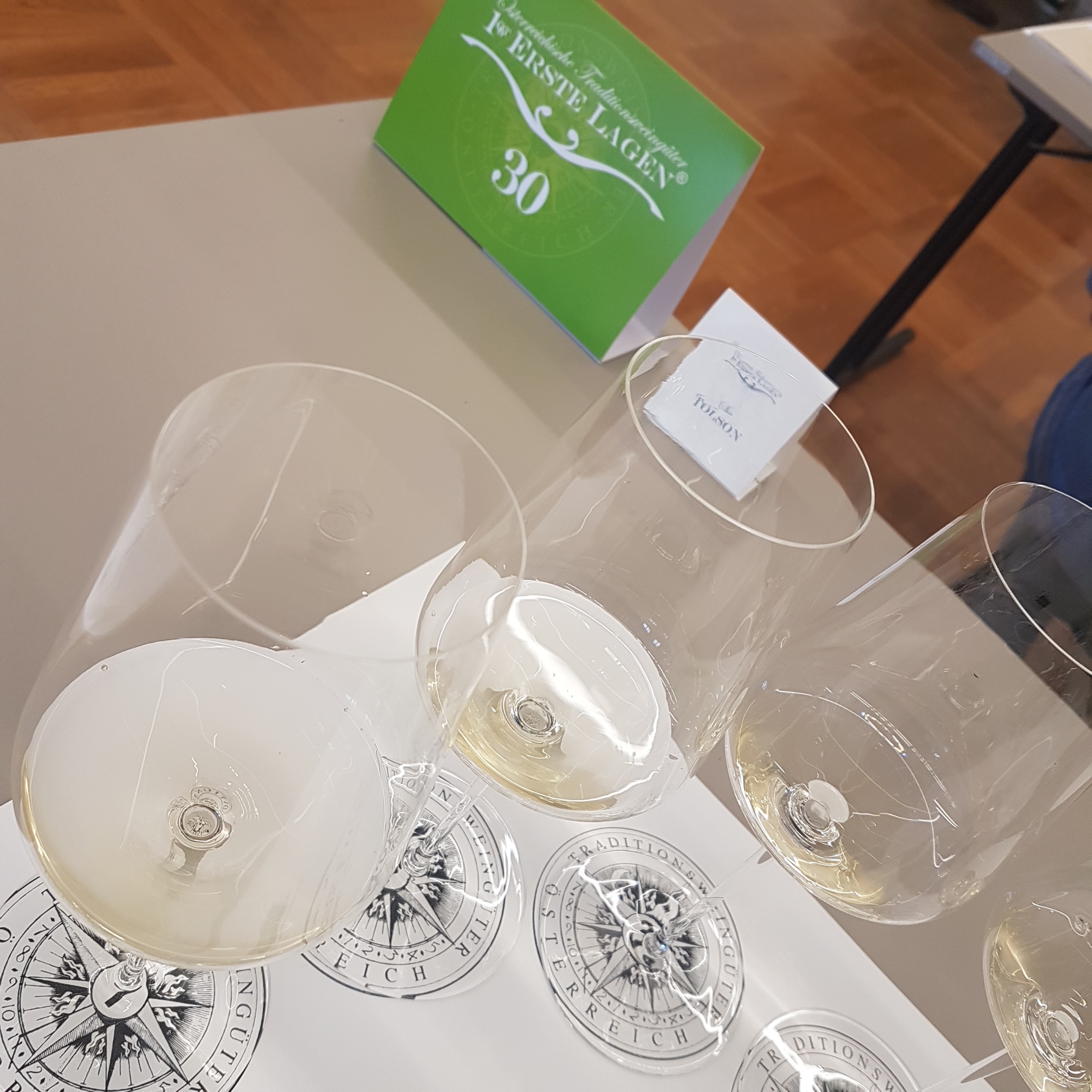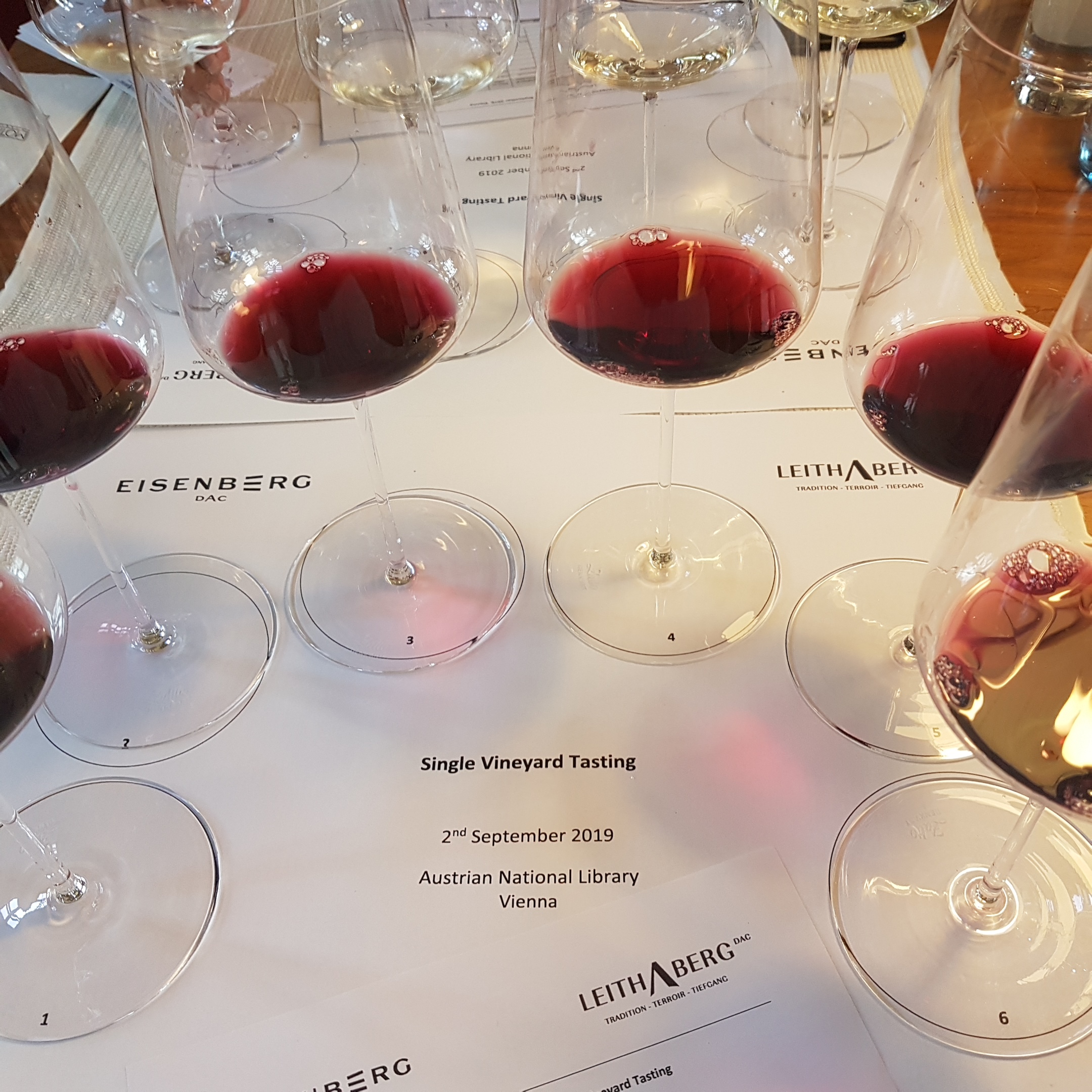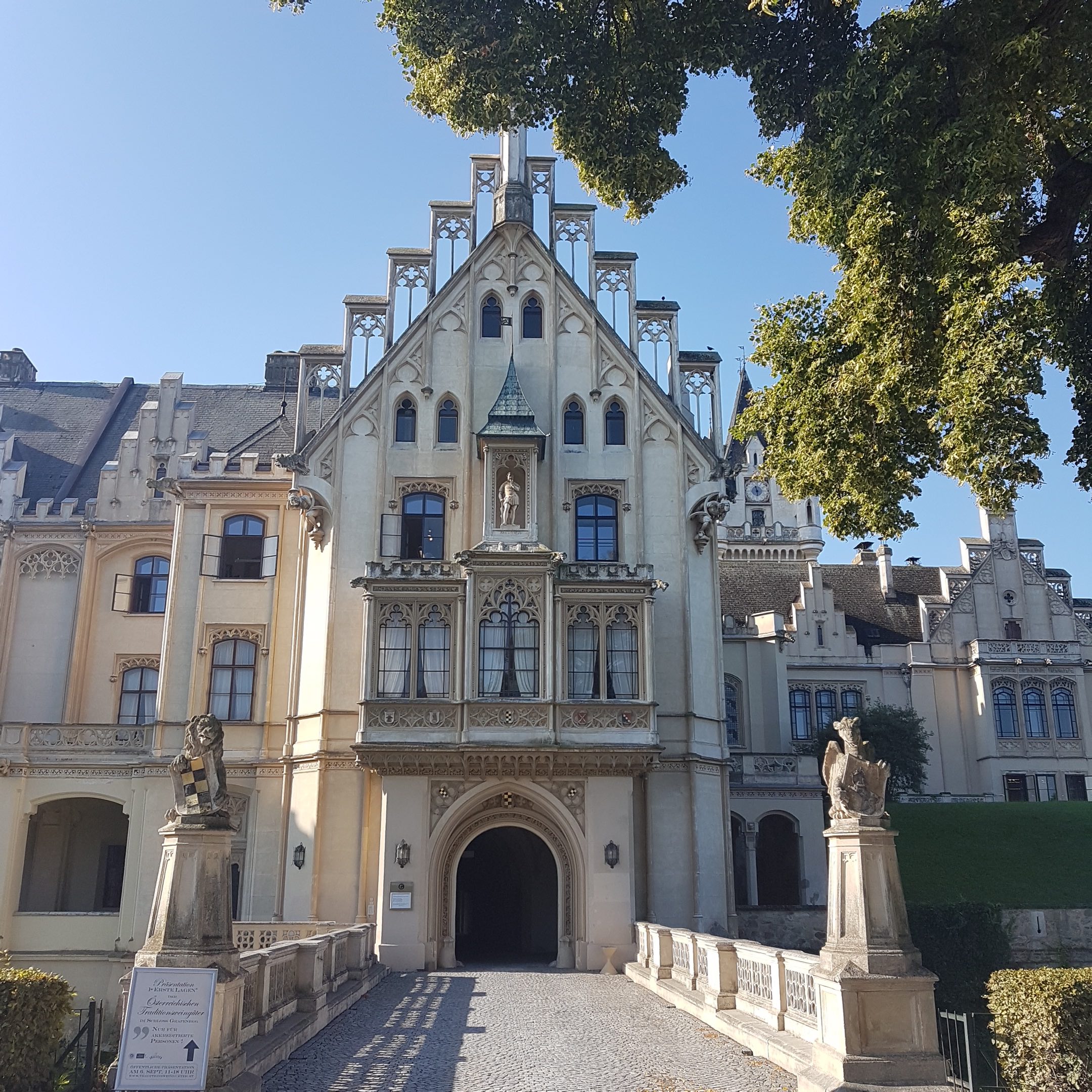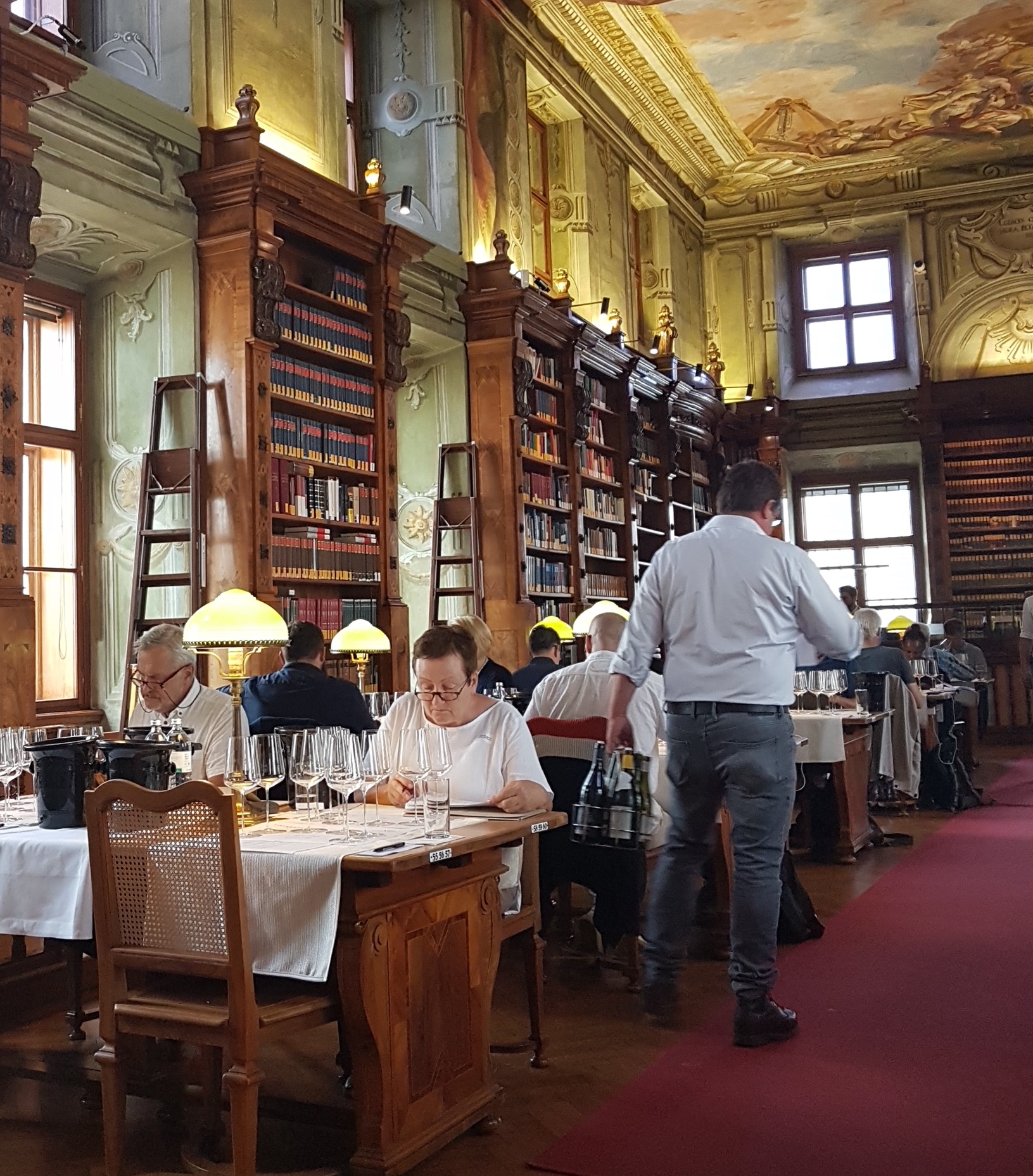Silence reigns in the Austrian National Library in Vienna, as is indeed fitting for such a historic and erudite setting. The dark wooden bookcases are lined with ancient tomes and the frescoes adorning its high ceiling also inspire silent awe. The only sounds punctuating the calm are footsteps, the tapping of fingers on computer keyboards and the clanking of wine bottles.

Photo: Sue Tolson
Burgenland joins the fold
The clanking of wine bottles? Indeed, I am not here to peruse the books or read, but rather to taste wine. Once again, it is time to taste the single vineyards of Austria. This year, as a prelude to the ’silent tastings’ of the Österreichische Traditionsweingüter (ÖTW), when wines from the Danube, Wien and Carnuntum regions are tasted in Schloss Grafenegg, Burgenland’s Eisenberg DAC and Leithaberg DAC are presenting their single-vineyard wines for tasting. Thus, international wine experts are now also lending their tasting skills to help classify the vineyard sites from these two regions, who also wish to join the classification process set in motion by the ÖTW. In this case, Blaufränkisch from Eisenberg and Leithaberg and whites from the latter made from Chardonnay, Grüner Veltliner, Pinot Blanc and Neuburger are the cause of both the clanking and the thoughtful silence.

Photo: Sue Tolson
Along the Danube
Tasting of the wines from along the course of the Danube continues over the next days. Now with the inclusion of Carnuntum and Wien, the tasting takes in the vineyards stretching along the main valley of the Danube, as well as the side valleys of its tributaries, from the border with Hungary to Wachau. There are close on 200 wines to taste, mostly Grüner Veltliner and Riesling, the two flagship varieties of much of the Danube as well as Wiener Gemischter Satz and Weißburgunder (aka Pinot Gris) from Wien and spicy Blaufränkisch, Zweigelt and blends thereof from Carnuntum. The tasting is a test of both stamina and methodolicalness as you can taste the wines in any order you choose.

Grafenegg (photo: Sue Tolson)
Wachau to join the DAC system
Until three years ago, Wachau, famed for its steep terraced vineyards along the banks of the Danube, resisted joining the DAC system as its association of winegrowers, Vinea Wachau, has its own classification system (Steinfeder, Federspiel and Smaragd), based on natural sugar content rather than origin. However, on the final evening in Grafenegg, we learn that moves are now afoot for them to join the DAC system. This has subsequently become official and the region’s wines will be under the DAC system from the 2020 vintage. Like Styria, who are also not part of the ÖTW, they will base their DAC on the German Prädikatsweinguter (VDP).

Austrian National Library in Vienna (photo: Sue Tolson)
The DAC (Districtus Austriae Controllatus) system, begun in the Weinviertel in 2003, now extends to the majority of Austrian wine regions. Rust will be able to label its Ruster Ausbruch DAC from the 2017 vintage and those regions still outside the system are now in the pipeline to join: Wagram with Grüner and Roter Veltliner and the Thermenregion with Rotgipfler, Zierfandler, Sankt Laurent and Pinot Noir. Thus, the DAC system will soon cover the whole of Austria’s wine regions. However, will they also all get on board with vineyard classification? That remains to be seen.






